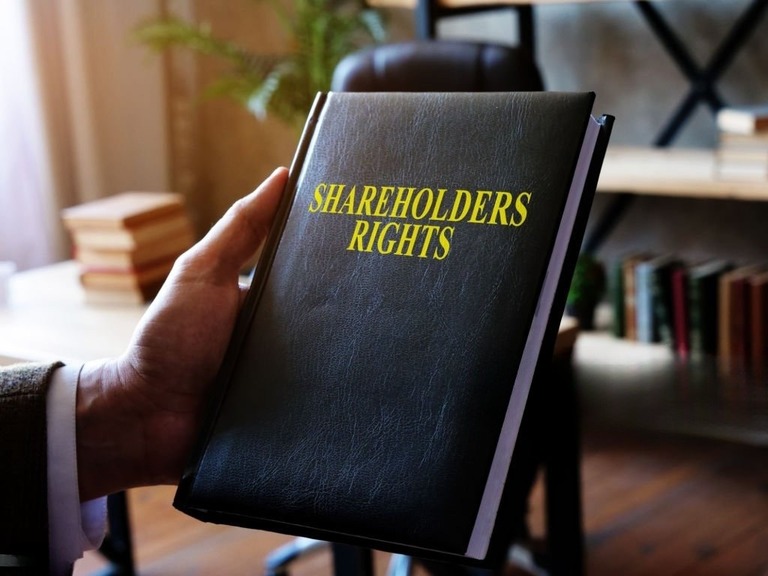Mergers and acquisitions (M&A) are complex processes that can significantly alter the landscape of corporate governance and shareholder rights. As companies seek to grow and optimize their operations through M&A, it is essential to prioritize the protection of shareholder interests. This article delves into the mechanisms available for safeguarding shareholder rights during M&A transactions, emphasizing legal considerations, best practices, and the importance of transparency.

Understanding Shareholder Rights
Shareholders play a vital role in corporate governance, possessing rights that empower them to influence company decisions and protect their investments. These rights typically include:
• Voting Rights: Shareholders have the right to vote on significant corporate matters, including mergers and acquisitions.
• Access to Information: Shareholders are entitled to receive relevant information about the company, enabling informed decision-making.
• Rights to Dividends: Shareholders have the right to receive dividends, contingent upon the company’s performance and board decisions.
• Rights to Sue: Shareholders may pursue legal action to protect their interests if they believe their rights have been violated.
Understanding these rights is crucial in the context of M&A transactions, where shareholder interests may be significantly affected.
The Role of Legal Frameworks in Protecting Shareholder Rights
Legal frameworks at both the federal and state levels play a critical role in safeguarding shareholder rights during M&A transactions. These laws establish guidelines and procedures to ensure transparency and fairness throughout the M&A process.
1. Securities Regulations
In the United States, the Securities and Exchange Commission (SEC) regulates M&A transactions under the Securities Act of 1933 and the Securities Exchange Act of 1934. These laws require companies to provide comprehensive disclosures regarding the terms of the transaction, ensuring that shareholders have access to all relevant information.
• Disclosure Requirements: Companies must file a proxy statement that outlines the details of the proposed M&A, including financial statements, management discussions, and potential conflicts of interest. This transparency allows shareholders to make informed voting decisions.
• Fairness Opinions: Often, boards of directors will seek a fairness opinion from financial advisors to ensure that the terms of the transaction are fair to shareholders. This opinion adds an additional layer of protection and enhances the board’s fiduciary duty to act in the best interests of shareholders.
2. State Corporate Laws
State laws govern corporate transactions, and many states have specific statutes designed to protect shareholder rights in M&A transactions. For example, the Delaware General Corporation Law (DGCL) provides a comprehensive legal framework that emphasizes shareholder protection.
• Appraisal Rights: Under certain circumstances, shareholders may have the right to dissent from an M&A transaction and seek an appraisal of their shares. This allows them to receive fair value for their investments if they disagree with the terms of the deal.
• Business Judgment Rule: This legal doctrine protects directors and officers from liability if they acted in good faith and with reasonable care in approving an M&A transaction. However, if shareholders can demonstrate a breach of fiduciary duty, they may challenge the transaction in court.
Best Practices for Protecting Shareholder Rights in M&A
While legal frameworks provide a foundation for shareholder protection, best practices in corporate governance and transaction management are equally important. Below are several strategies that companies can adopt to safeguard shareholder interests during M&A transactions.
1. Enhancing Communication and Transparency
Effective communication is paramount in protecting shareholder rights. Companies should prioritize transparency throughout the M&A process by:
• Providing Timely Updates: Regularly updating shareholders on the progress of the transaction, including any significant developments or changes, fosters trust and reduces uncertainty.
• Holding Informational Meetings: Hosting town hall meetings or conference calls to address shareholder concerns and answer questions can enhance understanding and support for the transaction.
2. Engaging Shareholders Early
Involving shareholders early in the M&A process can mitigate resistance and enhance acceptance of the transaction. Companies can do this by:
• Soliciting Feedback: Actively seeking input from shareholders on strategic decisions, including potential acquisitions, can empower them and make them feel valued.
• Conducting Surveys: Utilizing surveys to gauge shareholder sentiment regarding the proposed transaction can provide valuable insights and inform decision-making.
3. Implementing Fair Valuation Practices
Ensuring that the valuation of the target company is fair is crucial for protecting shareholder rights. Companies can adopt best practices by:
• Hiring Independent Advisors: Engaging independent financial advisors to conduct thorough valuations can enhance the credibility of the transaction and ensure fairness.
• Utilizing Multiple Valuation Methods: Employing various valuation methods, such as discounted cash flow analysis and comparable company analysis, can provide a more comprehensive view of the target’s value.
The Importance of Fiduciary Duties
Fiduciary duties are fundamental to protecting shareholder rights during M&A transactions. Directors and officers have a legal obligation to act in the best interests of shareholders, ensuring that they fulfill their responsibilities diligently.
1. Duty of Care
The duty of care requires directors to make informed decisions based on adequate information and analysis. This duty is particularly critical in the context of M&A transactions, where the stakes are high, and decisions can have lasting impacts.
• Conducting Thorough Due Diligence: Boards must undertake comprehensive due diligence to assess the financial, legal, and operational aspects of the target company. This diligence is essential for making informed decisions that protect shareholder interests.
2. Duty of Loyalty
The duty of loyalty mandates that directors act in good faith and avoid conflicts of interest. In M&A transactions, this duty is especially relevant, as potential conflicts may arise between the interests of shareholders and those of management or affiliated parties.
• Disclosing Conflicts of Interest: Directors must promptly disclose any potential conflicts of interest and recuse themselves from decisions where their interests may conflict with those of shareholders.
• Independent Committees: Establishing independent committees to oversee the M&A process can mitigate potential conflicts and enhance transparency.
Legal Recourse for Shareholders
Despite the best efforts of companies to protect shareholder rights, disputes may still arise during M&A transactions.
Shareholders have various legal avenues available to them if they believe their rights have been violated.
1. Derivative Actions
Shareholders may file derivative actions on behalf of the corporation if they believe that the board has breached its fiduciary duties. These actions can hold directors accountable for decisions that adversely affect the company and its shareholders.
2. Class Action Lawsuits
In cases where a large group of shareholders is affected by the same issue, class action lawsuits may be pursued. These lawsuits can address claims of fraud, misrepresentation, or other unlawful conduct related to the M&A transaction.
3. Seeking Injunctive Relief
Shareholders may seek injunctive relief to prevent the completion of an M&A transaction if they believe that it violates their rights or applicable laws. Courts can issue injunctions to halt the transaction until the legal issues are resolved.
Protecting shareholder rights during M&A transactions is essential for maintaining trust, transparency, and corporate governance. By understanding the legal frameworks, implementing best practices, and adhering to fiduciary duties, companies can safeguard shareholder interests throughout the M&A process.
As the corporate landscape continues to evolve, the importance of robust protections for shareholder rights will remain paramount. Companies that prioritize these protections not only enhance their reputation but also create a more equitable environment for all stakeholders involved. Ultimately, the success of an M&A transaction hinges on the extent to which shareholder rights are respected and protected, underscoring the necessity of a diligent and informed approach to corporate governance.
Read more at:
- Factors Influencing the Due Diligence Process in M&A Transactions
- Tax Regulations to Consider in M&A Transactions
- Establishing a Foreign-Invested Manufacturing Company in Vietnam: Insights into the 2025 Investment Law

